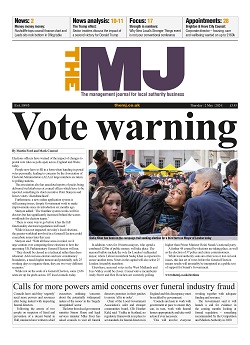How do you ensure that your local skills infrastructure is meeting the need of your local employers? How do you know what the trends are in your region that ensure you can attract the workforce you need and the best jobs and futures for your citizens?
As power over skills funding is increasingly devolved, these are the questions that local government will now seek to answer. While finance streams and government priorities have sometimes skewed which courses can and do get funding, these decisions are best made by understanding the local labour market and its interaction with the skills infrastructure.
It has long been argued that local government is best placed to facilitate this, and devolution of the Apprenticeship Levy and other pots of skills funding will allow this to happen. But to do so, the right tools and the best possible data for planning will be essential.
IPPR (the Institute for Public Policy Research), the JPMorgan Foundation and Burning Glass have teamed up to create Where The Work Is. This tool was created as part of a three year long collaboration called New Skills at Work, seeking to equip the UK to compete in what we now know will be a post-Brexit economy and improve skills infrastructure in the UK. This is an innovative digital tool that looks at supply and demand for occupations in your local area.
The website is completely free to use. The current focus of the tool is on mid-skill, entry level roles that require some qualification. The tool also delineates between those opportunities that seek candidates with either FE or HE qualifications. It helps you understand down to national/regional and many Local Economic Partnership (LEP) levels which skills are over and under-represented, what the average salary for those roles is and what competition there is for them.
This will be invaluable in helping local authorities with long term planning and increasing coordination of the different actors who help them make their places successful. Knowing on a real-time basis what the trends are in local employment, where the skills gaps are and what skills are available in your area is vital. This helps local authorities plan for a their own workforce needs and training as an employer, and also helps councils to work with local education providers to ensure the needs of all local businesses are met.
Brexit will put a great deal of additional pressure on employers to increase and use their local skills capacity. This will be essential to close the UK productivity gap and make our places internationally competitive in a transformed economy. Labour markets are adapting to the challenges of the 21st Century and these shifts are happening rapidly.
The ability to reflect the market as it is, and show trends as they develop, is what makes Where The Work Is a continually helpful and valuable resource, which people working in local government are returning to time and again to help them understand local needs.
We know that resources and capacity in the current economic climate are tight. In this constrained landscape, every penny saved helps. That is why this tool is completely free to use. There are no stealth charges or on-selling – it’s just a resource we developed because employers, educators and the politicians who allocate resources told us it would be helpful. We also greatly value any and all feedback on your experiences in using the tool and how we might improve it.
This is a community focused tool that we want to continue to develop in consultation with its users. We know that councils are increasingly looking to make data–informed decisions that help you plan effectively to ensure your place thrives. It is to help you do so that we developed Where the Work Is.
Clare McNeil is Associate Director for Work and Families at IPPR. If you have any questions about Where The Work Is or the New Skills At Work programme please email c.mcneil@ippr.org.



